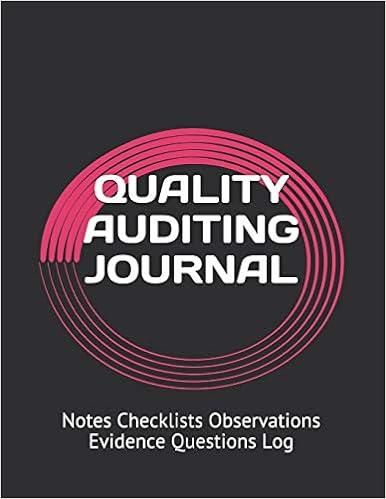Question
What is the purpose of keeping a change fund in a business? Answer a. to pay balance to customers b. to meet smaller expenses in
What is the purpose of keeping a change fund in a business? Answer a. to pay balance to customers b. to meet smaller expenses in the business c. to pay daily wages d. none of the above 2 points Question 2 In a petty cash register any amount of cash gained or lost through errors is called a Answer a. cash over account. b. cash short account. c. petty cash account. d. cash short & over account. 2 points Question 3 The total cash in a cash register drawer minus the change fund is: Answer a. the total sales. b. the total cash sales from the cash register tape. c. the credit sales. d. the change fund. 2 points Question 4 The original cost of an asset minus the accumulated depreciation is known as the: Answer a. book value. b. market value. c. original value. d. depreciation. 2 points Question 5 The amount to be depreciated divided by the estimated useful life comprise the: Answer a. annual depreciation expenses. b. accumulated depreciation. c. partial depreciation. d. market value of an asset. 2 points Question 6 What will the annual depreciation be under the straight line method if the amount to be depreciated is $50,000, and the estimated useful life of an asset is 10 years? Answer a.$50,000 b. $20,000 c.$10,000 d.$5,000 2 points Question 7 Which accounts receivable account can a business not collect? Answer a.Uncollectible Account b.Accounts Receivable Account c. Accounts Payable Account d. Expense Account 2 points Question 8 Which account is to be debited to write off uncollectible receivable? Answer a. accounts receivable account b. accounts payable account c. uncollectible expense account d. cash in bank account 2 points Question 9 This method of accounting for uncollectible accounts matches the estimated uncollectible account expense with sales made during the same period: Answer a. Direct write off b. Allowance c. Percentage of net sales d. Aging of Accounts Receivable 2 points Question 10 What is the maturity value of a bill whose principal is $50,000, interest rate is 8%, and term is 60 days? Answer a. $50,657.52 b. $50,000 c. $657.52 d. $60,657.52 2 points Question 11 The cost of inventory at the end using LIFO is $22,560 and the market price is $20,530. Using the lower-of-cost-or-market rule, what inventory cost should appear in the financial statement? Answer a. $22,560 b. $20,530 c. $43,090 d. $2,030 2 points Question 12 On July 7, Mr. Rex signed a 90-day, 10% note with Federal Bank for $20,000. What will be the note's maturity date? Answer a. October 5 b. September 5 c. September 30 d. July 7 2 points Question 13 The sales total is $56,000, sales discount is $1,000, sales return is $5,000, and the estimated percentage of uncollectible accounts is 1.5%. What will be the final uncollectible amount? Answer a. $5,000 b. $6,000 c. $750 d. $7,500 2 points Question 14 What will be the depreciation, via the straight line method, if the cost of a plant is $43,250, estimated disposal value is $3,250, and the estimated useful life of plant is five years? Answer a. $40,000 b. $4,000 c. $3,250 d. $8,000 2 points Question 15 If a loan's principal is $40,000, interest rate is 8%, and the term is 90 days, what will the interest payable be on the maturity date? Answer a. $789.04 b. $889.04 c. $989.04 d. $689.04 Match the word with the best choice below. 1, direct write-off method 2. percentage of net sale method 3. aging of accounts receivable method 4. perpetual inventory system 5. replenish cash fund A. constant and up-to-date record of merchandise on hand at any point of time B. uncollectible accounts directly removed from accounting records C. restore the fund to its original cash balance D. certain percentage on each year of net sales will be uncollectible E. classify the accounts receivable Match the word with the best choice below. 1.periodic inventory system 2.FIFO 3.notes payable 4. notes receivable 5. notes receivable A. no interest rate indicated on the note B. promissory note issued to creditors C. first item in is first item sold D. updating the inventory after a physical verification of merchandise E. promissory note accepted from credit customer
Step by Step Solution
There are 3 Steps involved in it
Step: 1

Get Instant Access to Expert-Tailored Solutions
See step-by-step solutions with expert insights and AI powered tools for academic success
Step: 2

Step: 3

Ace Your Homework with AI
Get the answers you need in no time with our AI-driven, step-by-step assistance
Get Started


